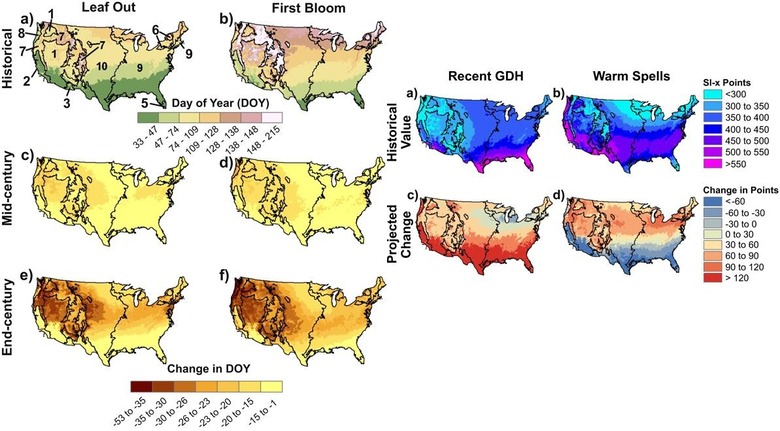Global Warming To Expand Our Springtime
Over the next century we'll have a median of 3 weeks more Springtime according to scientists. Publishing a paper in the journal Environmental Research Letters, these University of Wisconsin-Madison-based scientists suggest that rising global temperatures will have adverse implications for the growing season around the world over the next 100-years. Winter will be shorter, "False Springs" will disappear in some places and rise up in others, and migrating birds will arrive in their season-dependent locations only to find food to be lacking.
Andrew Allstadt, an author on the paper being published this week on climate change, suggests that there are many reasons why a lengthening springtime would be bad news for living things. "Long distance migratory birds, for example, time their migration based on day length in their winter range," said Allstadt.
"They may arrive in their breeding ground to find that the plant resources that they require are already gone."
These scientists used the extended Spring Indices to predict dates of incoming Springs and growing seasons. Dates of leaf and flower emergence are compared to day length.

False Springs are investigated in this same study. These are events in which a growing season begins, plants begin to grow, and another frost appears, killing all manner of flora. While False Springs are projected to decrease in most areas, the western Great Plains are expected to see an increase in the events.
"This is important as false springs can damage plant production cycles in natural and agricultural systems," said Allstadt.
"In some cases, an entire crop can be lost."
Working with a NASA Biodiversity Grant, these scientists have published much of their work to one University of Wisconsin-Madison website. There you'll find that their research also covers a wide variety of extreme weather conditions. They're particularly interested in bird populations in wildlife refuges, and how droughts and heat waves affect them.
You can learn more in the paper "Spring plant phenology and false springs in the conterminous US during the 21st century" as published by IOPScience this week. This paper was authored by Andrew J Allstadt, Stephen J Vavrus, Patricia J Heglund, Anna M Pidgeon, Wayne E Thogmartin, and Volker C Radeloff, and can be found in Environmental Research Letters 10 104008.
